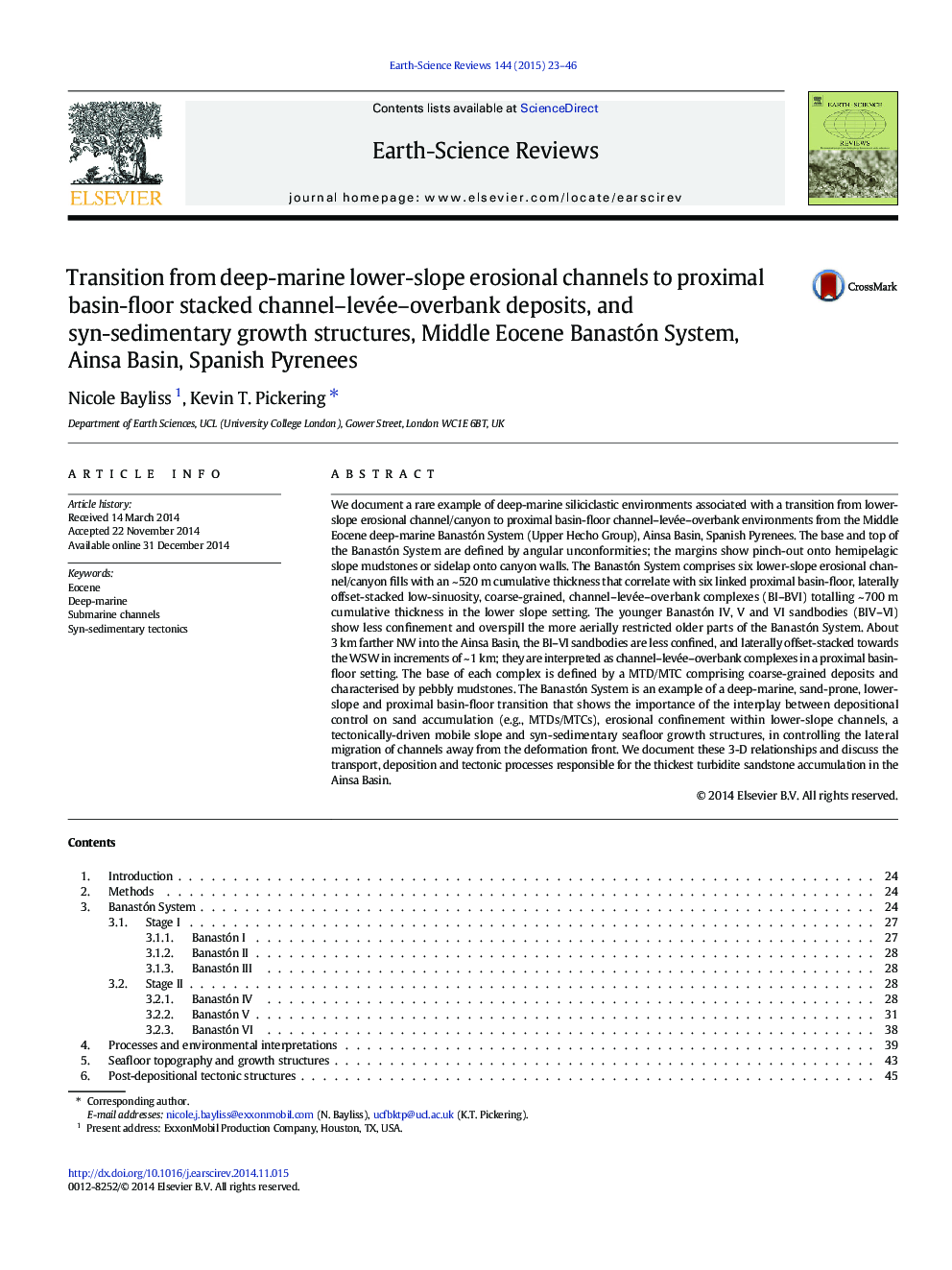| کد مقاله | کد نشریه | سال انتشار | مقاله انگلیسی | نسخه تمام متن |
|---|---|---|---|---|
| 4725701 | 1639958 | 2015 | 24 صفحه PDF | دانلود رایگان |

We document a rare example of deep-marine siliciclastic environments associated with a transition from lower-slope erosional channel/canyon to proximal basin-floor channel–levée–overbank environments from the Middle Eocene deep-marine Banastón System (Upper Hecho Group), Ainsa Basin, Spanish Pyrenees. The base and top of the Banastón System are defined by angular unconformities; the margins show pinch-out onto hemipelagic slope mudstones or sidelap onto canyon walls. The Banastón System comprises six lower-slope erosional channel/canyon fills with an ~ 520 m cumulative thickness that correlate with six linked proximal basin-floor, laterally offset-stacked low-sinuosity, coarse-grained, channel–levée–overbank complexes (BI–BVI) totalling ~ 700 m cumulative thickness in the lower slope setting. The younger Banastón IV, V and VI sandbodies (BIV–VI) show less confinement and overspill the more aerially restricted older parts of the Banastón System. About 3 km farther NW into the Ainsa Basin, the BI–VI sandbodies are less confined, and laterally offset-stacked towards the WSW in increments of ~ 1 km; they are interpreted as channel–levée–overbank complexes in a proximal basin-floor setting. The base of each complex is defined by a MTD/MTC comprising coarse-grained deposits and characterised by pebbly mudstones. The Banastón System is an example of a deep-marine, sand-prone, lower-slope and proximal basin-floor transition that shows the importance of the interplay between depositional control on sand accumulation (e.g., MTDs/MTCs), erosional confinement within lower-slope channels, a tectonically-driven mobile slope and syn-sedimentary seafloor growth structures, in controlling the lateral migration of channels away from the deformation front. We document these 3-D relationships and discuss the transport, deposition and tectonic processes responsible for the thickest turbidite sandstone accumulation in the Ainsa Basin.
Journal: Earth-Science Reviews - Volume 144, May 2015, Pages 23–46